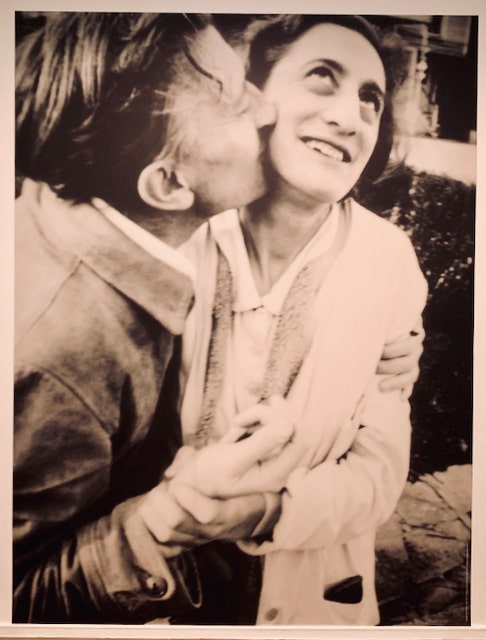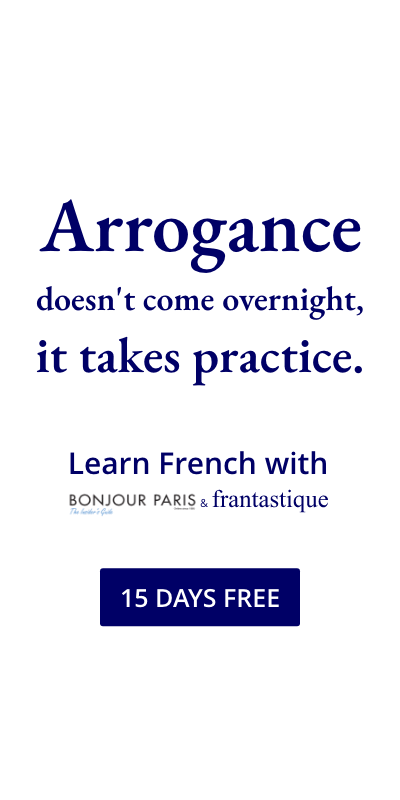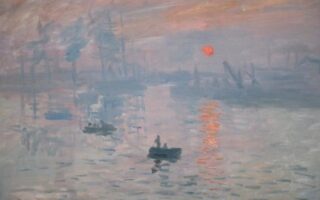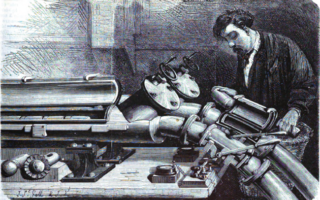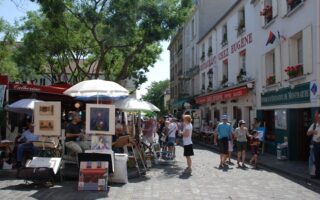Anni and Josef Albers: Together in Life and Art
- SUBSCRIBE
- ALREADY SUBSCRIBED?
BECOME A BONJOUR PARIS MEMBER
Gain full access to our collection of over 5,000 articles and bring the City of Light into your life. Just 60 USD per year.
Find out why you should become a member here.
Sign in
Fill in your credentials below.
The Musée d’Art Moderne dedicates a retrospective, the first in France, to Anni and Josef Albers, the seminal artist couple defined by some as a “two-person religious sect.”
Anni and Josef met at the Bauhaus in 1922. He was already part of the faculty, teaching both glasswork and design, while Anni, a gifted student, had joined the school to learn weaving, the only course considered appropriate for female students despite the school’s progressive methods.
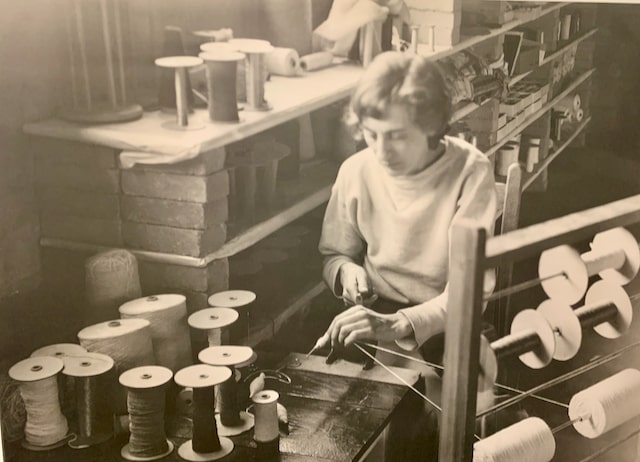
Anni at work in her studio, black and white photo exhibited at the Musée d’Art Moderne de Paris, photographed by Sarah Bartesaghi Truong
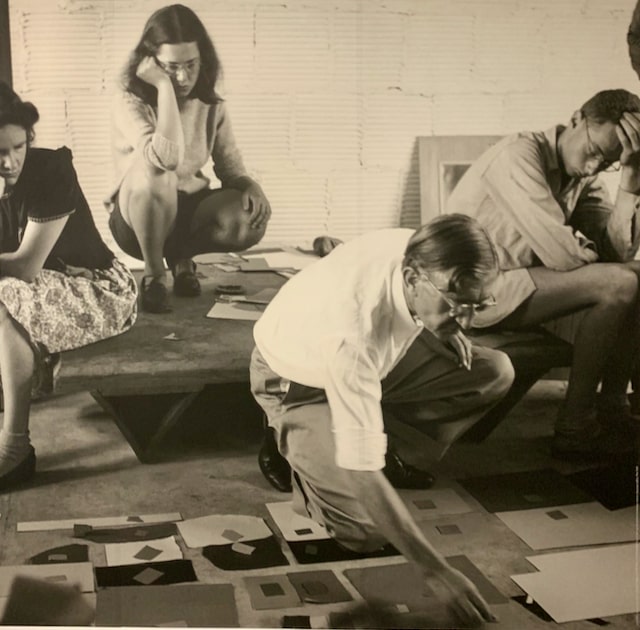
Josef teaching color theory, black and white photo exhibited at the Musée d’Art Moderne de Paris, photographed by Sarah Bartesaghi Truong
Married in 1925, the two left Germany for the United States in 1933 when, under pressure from the Nazi regime for their supposedly subversive teachings, the Bauhaus faculty decided to close the school down. For Anni, emigrating was not only a question of artistic freedom but also a life-and-death necessity, her Jewish origins putting her in danger. They never went back, teaching first at the newly established Black Mountain College in North Carolina, and then at Yale University, where Josef became chair of the new Department of Design.
Josef, alongside his work as an artist, was at his best teaching. A video shows him in class, explaining to his students how to look at what surrounds them, faithful to his guiding principle as a teacher, which was “to open eyes”.
The exhibition, organized jointly with the Josef and Anni Albers Foundation, aims to retrace their careers as well as their lives. The curator Julia Garimorth sets the tone from the start, where a series of black and white candid photographs of the couple welcome the visitor. The strength of their bond, evident in these portraits, acts as a fil rouge throughout the show, which displays side by side, in chronological order, works by Anni and Josef.
The creativity of one seems to respond to the creativity of the other, through different mediums.
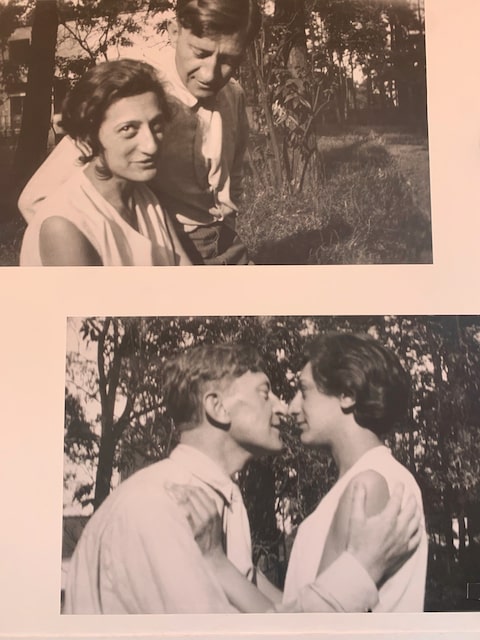
Anni and Josef Albers as newlyweds, black and white photos exhibited at the Musée d’Art Moderne de Paris, photographed by Sarah Bartesaghi Truong
Josef focused on drawing and printmaking at the start of his career, but then started experimenting in glassmaking at the Bauhaus. Even when, later, he played with new techniques, such as furniture making and silversmithing, there never seemed to be any unnecessary ornamentation. Throughout his career his works, whatever their material, obey strict principles of geometry, in anticipation of his later, and probably most famous masterpiece: the series Homage to the Square, here shown in several examples.
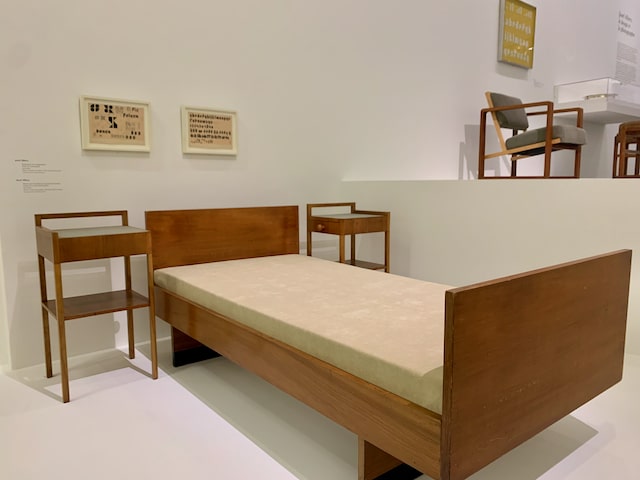
Furniture by Josef Albers (C) Musée d’Art Moderne de Paris
At first sight, Anni seems less adventurous, sticking to weaving for the best part of her career. Turning a constraint into a strength, she pushed the boundaries of her art, exploring different designs and techniques. Many have been inspired by the Andean textiles she studied initially at the Berlin Museum für Völkerkunde, an ethnographic museum with an extensive collection of non-European textiles, and later on during the course of the couple’s extended travels and stays in Mexico. Her tapestries blur the line between decor and art, rehabilitating what had been perceived until then as a minor artistic discipline.
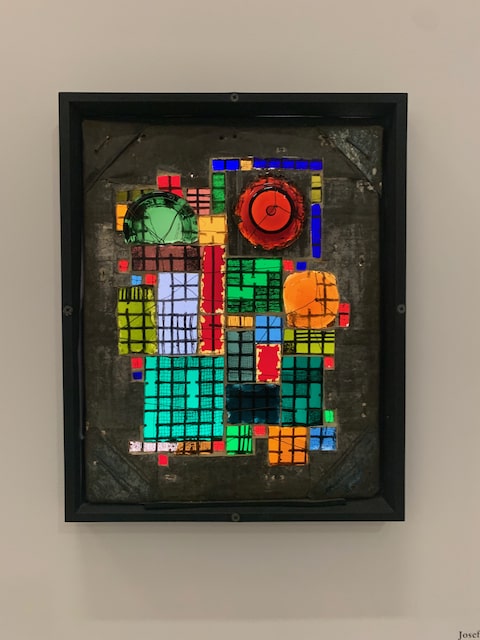
Glasswork by Josef Albers displayed at the Musée d’Art Moderne de Paris. (C) Sarah Bartesaghi Truong
There was a real symbiosis between Anni and Josef: they shared the same color palette, a love for pure lines and simple forms, and an wavering commitment to their art. And their complicity seems to outlast even their lives, as Anni, after Josef’s death in 1976, seemed to pick up where her husband left by experimenting with printmaking.
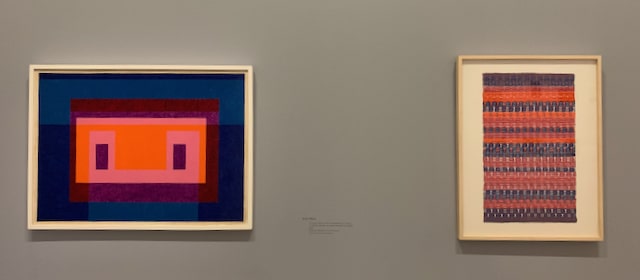
A painting by Josef Albers next to a tapestry by Anni. (C) Sarah Bartesaghi Truong
Her production was an explosion of squiggles, as if she finally felt liberated from the strictures of the straight lines imposed by the loom. This explosion of creativity she pursued until her death in 1994.
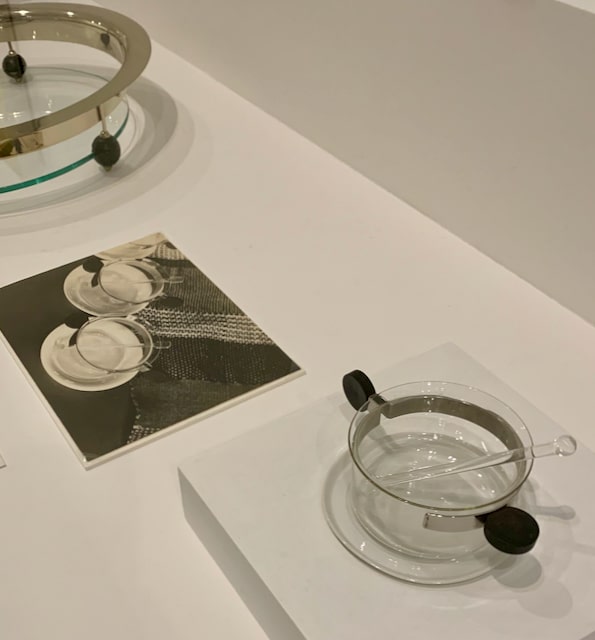
Timeless design by Josef Albers. (C) Sarah Bartesaghi Truong
The show is expansive, with more than 350 works on display. It feels surprisingly accessible, despite the abstract nature of the art. Is it thanks to their savant use of color, to the deceptive simplicity of the forms, or to their boundless creativity? The answer probably is “All of the above,” and that seems more than a good reason to visit the retrospective while in Paris.
‘Anni and Josef Albers – Art and Life’ is on in at Musée d’Art Moderne (11 Avenue du Président Wilson, 75116 Paris) until January 9, 2022.
Lead photo credit : Josef and Anni Albers in the US, black and white photo exhibited at the Musée d'Art Moderne de Paris, photographed by Sarah Bartesaghi Truong
More in Art, Couple, history, Life, Paris
